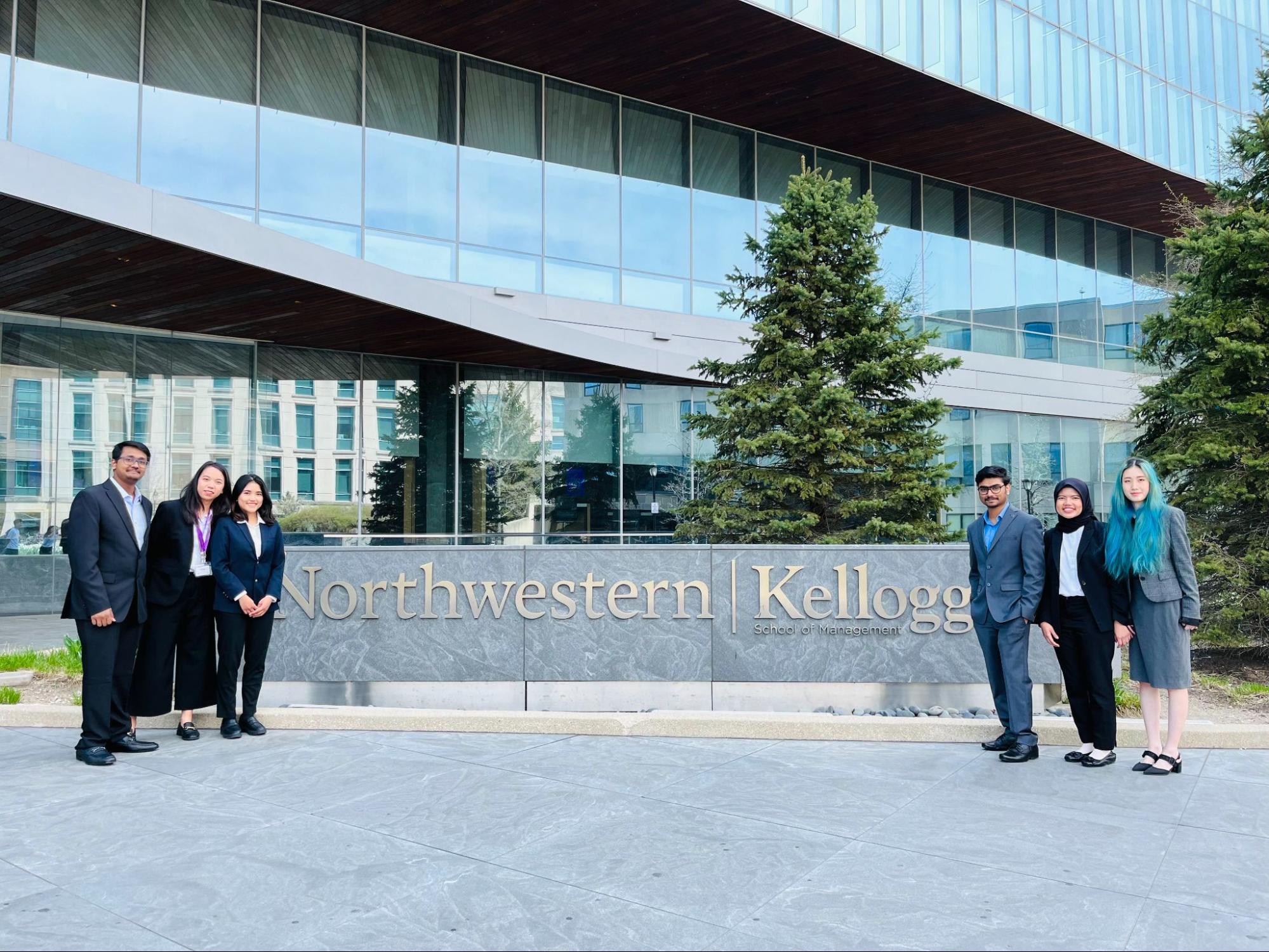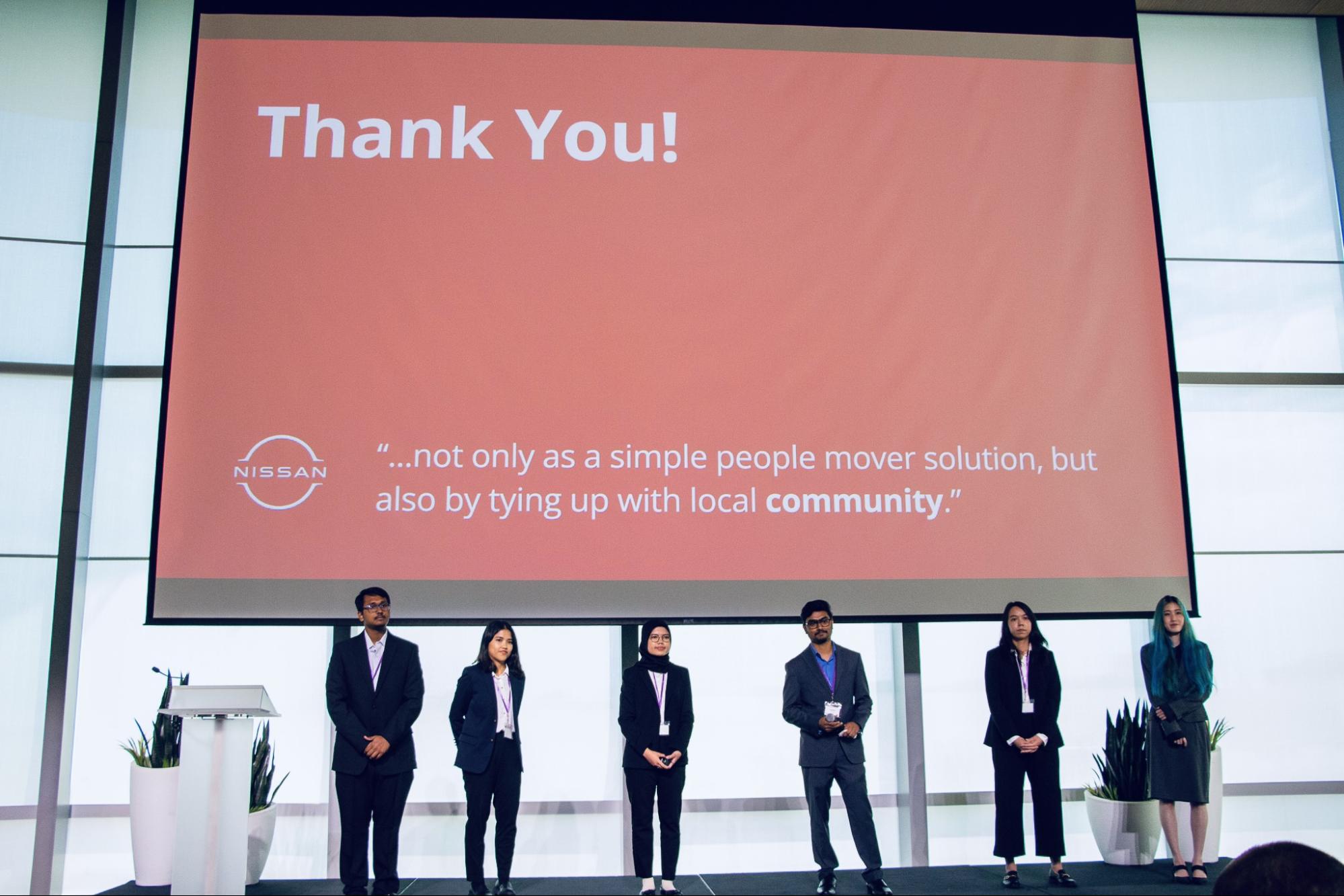Charging the Future: Students Finish Second in Kellogg Design Challenge
Six students from CMU took second place in the annual Kellogg Design Challenge at Northwestern University.
By Kaitlyn Stossel
What happens when you put three students from the Tepper School of Business with three students from the Master of Integrated Innovation for Products & Services (MIIPS) program together? An award winning solution to better serve the mobility needs of global transportation users.
This team of six students leveraged their unique learnings from across different programs at CMU to create a solution that earned them runner-up in the Kellogg Design Challenge, an annual design and business competition sponsored by North Western University’s Kellogg School of Management.
The Kellogg Design Challenge (KDC) is one of the largest business design competitions across the world. Each year, the KDC pairs with a sponsoring company to produce actionable insights for a complex challenge. This year, the challenge was sponsored by Nissan. Competitors were asked to consider how Nissan might reimagine existing transportation systems to better serve the mobility needs of global users.
The team from CMU was composed of Keziah Cahya Virdayanti (MIIPS ‘23), Vishal Urlam (MIIPS ‘23), Sherry Liang (MIIPS ‘23), Nadhira Fasya Ghasani (MBA ‘24), Gokul Govindaraju (MBA ‘24), and Yilin Shi (MSBA ‘23).

The team of CMU students stand outside of Northwestern University's Kellogg School of Management.
This group of diverse students spent hours brainstorming solutions to this problem presented by Nissan. Their first task was to define the problem.
“In the problem definition phase, we aimed to identify the key challenge facing EVs. To accomplish this, we surveyed and interviewed over 40 EV and non-EV owners, while also conducting secondary research. Our findings revealed that 'range anxiety' remains the primary concern for both groups.”
Range anxiety means worrying that the battery of an EV will run out of power before reaching the destination or a suitable charging point. This is where a charger installation service would come in handy.
The team’s next task was to solve the problem.
“During our problem-solving phase, we brainstormed several potential solutions to address the issue of “range anxiety” for EV drivers. One idea was to develop a power bank for EVs that could provide a portable charging solution for drivers on the go. Another option was to create an Uber-like service for EV drivers that allows them to call for assistance when their battery runs low, and another EV driver could offer a vehicle-to-vehicle charge,” said the team.
After much consideration, the team eventually decided to go with their Airbnb-like solution.
“Our solution is like Airbnb for electric vehicle (EV) charging. We created a platform that connects the supply and demand side of EV charging. EV car owners are the demand and EV home charger owners are the supply. The solution consists of multiple touch points: an in-car application for the driver, a mobile application for the driver and charger owner, and a charger installation service for the charger owner,” the team said.
The team’s decision to work on EV’s first emerged from a survey they conducted with over 150 participants from the United States and China, Nissan’s major markets. This survey revealed that cars are the main mode of transportation for people ages 18-24 which is the the target user they selected in the pre-qualification round. Following this research, they found that the two prominent areas of innovation in recent years are autonomous vehicles (AV) and electric vehicles (EV).
After discussions with multiple experts in the field, including CMU’s own Professor Raj Rajkumar, Professor of Electrical and Computer Engineering at the College of Engineering and Karen Lightman, Executive Director of Metro 21, the team realized that AVs still face significant technological and legal challenges that they must overcome before becoming completely beneficial to society. This means that EVs are being prioritized right now because of their potential to reduce greenhouse gas emissions.
The team also decided to focus their project on EVs because Nissan was the first automaker to introduce a mass-produced EV to the market with the launch of the Nissan Leaf in 2010.
“We chose this idea because it tackles the chicken-and-egg problem of EV adoption. Currently, more EV charging stations are needed to encourage greater EV adoption; but with our platform, more EV owners would translate to more EV home chargers, and vice versa.”

CMU concludes their presentation at the Kellogg Design Challenge.
